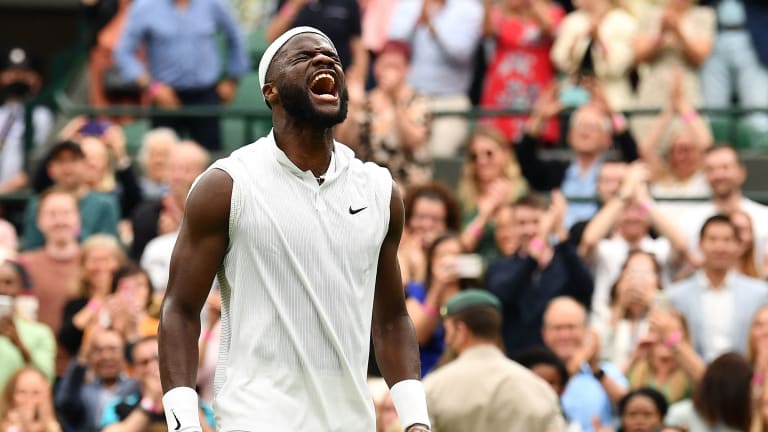Wimbledon
Frances Tiafoe enjoys prime Wimbledon cut with Stefanos Tsitsipas stunner
By Jun 28, 2021Wimbledon
All the feels! Sophia, Edie Murray watch dad Andy in farewell Wimbledon with uncle Jamie
By Jul 04, 2024Wimbledon
"It's just smelling like a Wimbledon": Two-time champion Kvitova finding her form on her favorite surface
By Jul 02, 2022Wimbledon
Medvedev boasts high comfort level on grass ahead of SW19 return
By Jun 28, 2021Wimbledon
Andy Murray back practicing for singles return at Wimbledon
By Jun 22, 2021Wimbledon
Treasure Chest: Is the best yet to come for Simona Halep?
By Jun 21, 2021Wimbledon
Naomi Osaka out of Wimbledon; next event expected to be Tokyo Olympics
By Jun 17, 2021Wimbledon
Half-capacity crowds authorized for start of Wimbledon
By Jun 15, 2021Wimbledon
Andy Murray shares vaccination photo, plans to play Queen's Club and Wimbledon
By Jun 04, 2021WTA Brisbane, Australia
Aryna Sabalenka passes Madison Keys test to book Brisbane semifinal spot
By Jan 09, 2026Frances Tiafoe enjoys prime Wimbledon cut with Stefanos Tsitsipas stunner
How Tiafoe used the grass to help him do what he does best and record his first Top 5 win over the Roland Garros runner-up.
Published Jun 28, 2021
Advertising
Advertising

Tiafoe last won a match at Wimbledon in 2018, when he reached the third round (Getty Images).
© AFP via Getty Images